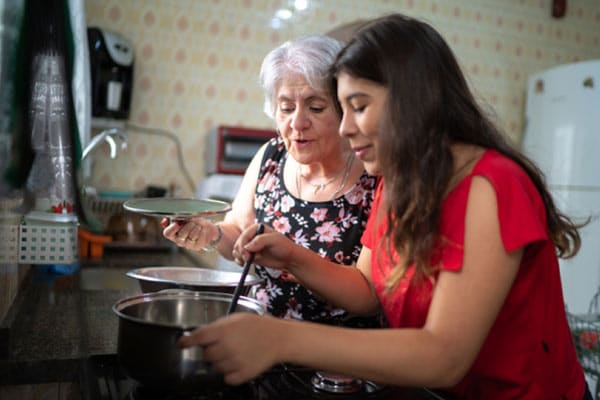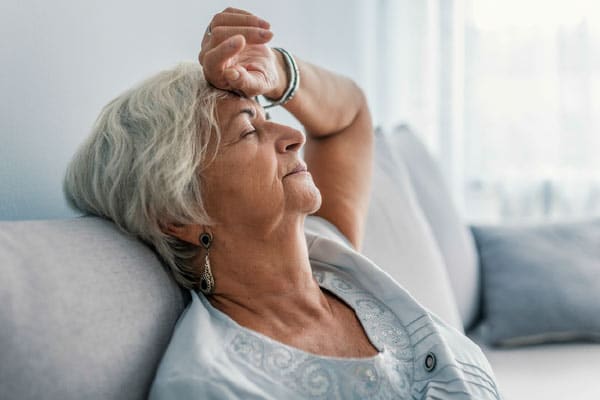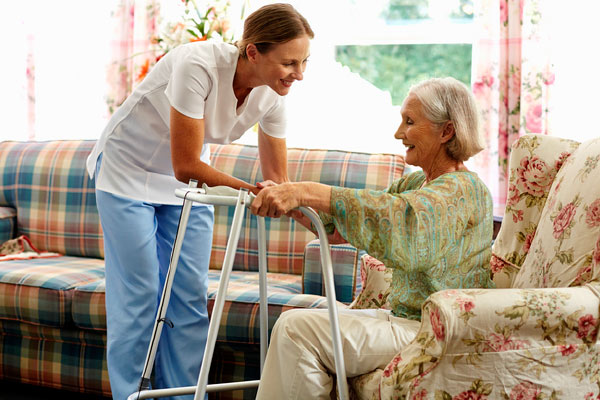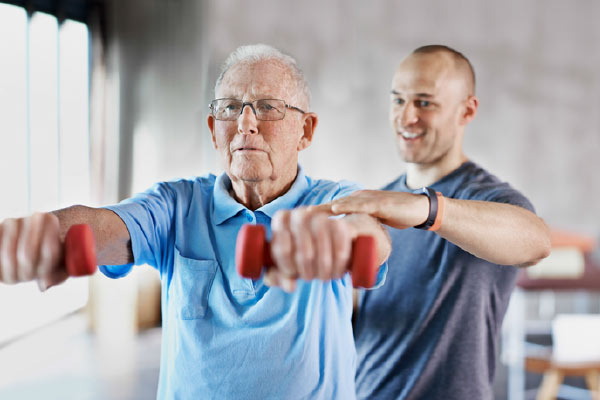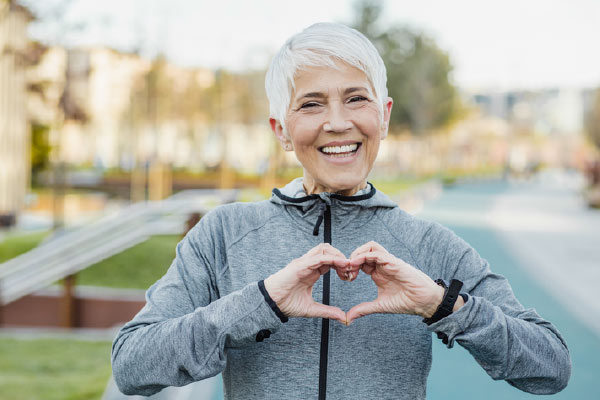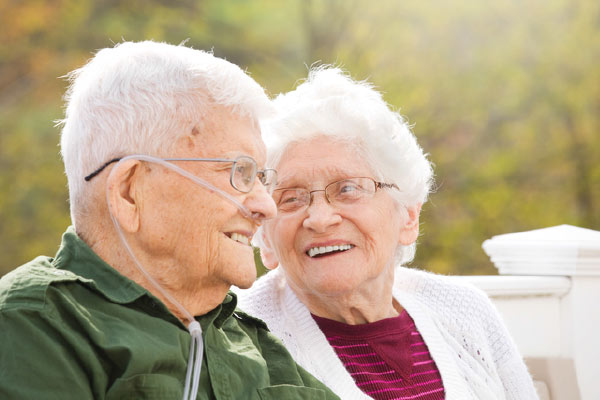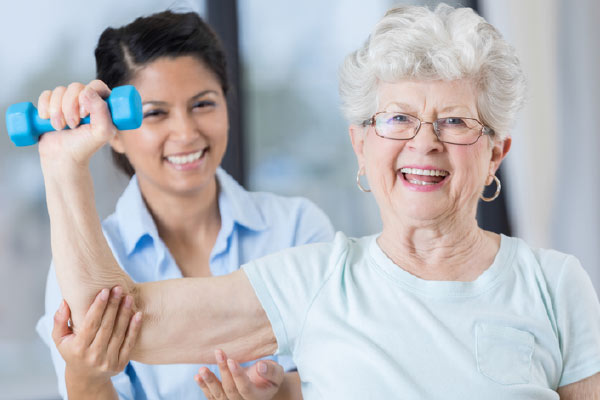For family caregivers, one of the top priorities when caring for a loved one with Alzheimer’s is to maintain a safe home environment. With changes in cognition, activities or routines that were once second nature may pose a safety risk for a loved one with dementia. To help family caregivers assess home safety for an older adult with dementia, the leaders in Florida home care at American, Advocate and Whitsyms In-Home Care outline a room-by-room Alzheimer’s home safety check. While not all of these adjustments need to be made immediately following a dementia diagnosis, it’s important to re-evaluate and adjust following behavioral or ability changes.
General Safety Inside the Home
- Post your home address and emergency numbers in several places throughout the home and near landline telephones.
- Install carbon monoxide detectors and smoke alarms in or near the kitchen and all sleeping areas. Check their functioning and install new batteries every six months.
- Install locks on all outside doors and windows. Consider installing an extra lock on outside doors that are located out of direct view, either higher up on the door, or down low.
- Install alarms or set a whole-house security system to chime when doors or windows are opened.
- Hide a spare house key outside in case your loved one with Alzheimer's disease locks you out of the house.
- Be sure that stairways have at least one secure handrail. Interior stairways should be carpeted or have safety grip strips.
- Keep all medications (prescription and over-the-counter) locked. Ensure that all prescription medications are in original containers with safety lids and clearly labeled with the person's name, name of the drug, drug strength, dosage frequency, and expiration date. Regularly dispose of expired medications.
- Reduce or eliminate clutter, which can create confusion and danger.
- Remove firearms and other weapons from the home or lock them up. Install safety locks on guns or remove ammunition and firing pins.
- Install night lights throughout the home – in hallways, the bathroom, bedrooms, kitchen and other areas where the senior might need to navigate at night.
- Remove throw rugs from the home as these may lead to an increased risk of falls.
General Safety Outside of the House
- Keep walkways clear of debris, hoses, and other objects that may cause the person to trip. Make certain walkways are even, fix any loose bricks, and install pathway lighting.
- Keep steps free from debris and install handrails.
- Mark the edges of steps with non-slip reflective tape.
- Consider installing a ramp when navigating the stairs becomes difficult.
- If your home has a swimming pool, restrict access with a sturdy fence and locked gate. Consider installing an alarm that sounds when motion is detected in the water.
- Install adequate outside lighting. Motion sensors that turn lights turn on and off automatically are especially helpful.
- Post a "NO SOLICITING" sign on the front gate or door.
Kitchen
- Install safety latches on storage cabinets and drawers designated for breakable or dangerous items.
- Lock away all household cleaning products, scissors, knives, matches, blades, small appliances, and anything valuable.
- Install safety knobs on the stove.
- Consider disconnecting the garbage disposal. People with Alzheimer's may place objects or their own hands in the disposal.
Bathroom
- Place nonskid adhesive strips or mats in the tub and shower.
- Use a shower stool and a hand-held shower head to make bathing easier.
- Install grab bars in the tub/shower.
- Set the water heater at 120°F to avoid scalding.
- Remove small electrical appliances from the bathroom and cover electrical outlets.
- Remove or disable the lock from the bathroom door to prevent the person with dementia from getting locked inside.
- Install a raised toilet seat with handrails or grab bars beside the toilet.
- Remove cleaning products or lock them away.
Bedroom
- Anticipate the reasons a person with dementia may need to get out of bed, such as thirst, hunger, going to the bathroom, pain, and/or restlessness. Try to meet these needs ahead of time to reduce the number of times the person may feel the need to get out of bed.
- Use transfer or mobility aids to ensure safety for both you and your loved one.
- Use monitoring devices to alert for any sounds that may indicate a fall or other need for help. These devices can also be effective in bathrooms.
- If using a hospital-type bed with rails and/or wheels, read the Food and Drug Administration's safety information.
Living Room
- Replace torn carpet.
- Place the remote controls for the DVD player, television, and stereo system out of sight.
- Keep cigarette lighters and matches out of reach.
- Be certain that walkways are clear of electrical cords as well as clutter.
- Place decals at eye level on picture windows, sliding glass doors, or furniture with large glass panels to identify the glass pane.
A great way to help ensure safety and promote dignity and an appropriate amount of independence for a loved one with dementia is to partner with a referred care provider from American, Advocate or Whitsyms In-Home Care. Each care provider we refer has specialized training and is able to provide customized care to meet a variety of needs, as well as encourage engagement in memory care activities. Additionally, referred care providers offer family caregivers support and respite so that they can step away for self-care.
Contact us any time to learn more about specialized Alzheimer’s and dementia in-home care for older adults by clicking the link to the location nearest you below:
- American In-Home Care – Serving North, Central, and West Coast of Florida
- Advocate In-Home Care – Serving Southeast and Southwest Florida
- Whitsyms In-Home Care – Serving Southeast and Southwest Florida
State of Florida License and Registration Numbers: 30211518, 30211651, 30211295, 30211390, 30210978, 30211293, 30211382, 30211504, 30211733, 30211535, 30211531, 30211710, 30211709, 30211045, 5661

